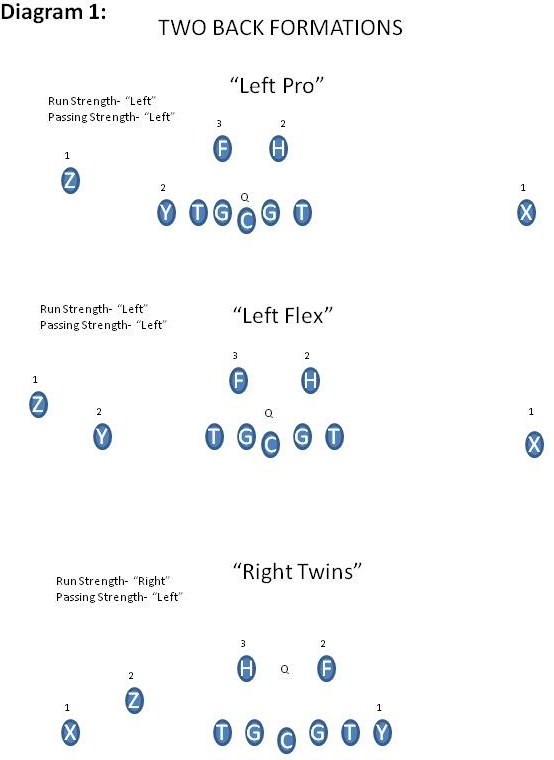By Mickey Mays, Researcher, X&O Labs
During an S.E.C. game last year, the announcer stated that one goal of Auburn offensive coordinator Gus Malzahn’s game plan was to "wear down the opponent’s defense both physically and mentally by using a fast tempo, multiple formations, and pre-snap shifts and motions." A confused football player performs with doubt in his mind instead of the inner confidence needed to excel. Simplifying offensive formation recognition will help your players eliminate the thinking process by making precise run and passing strength calls, align correctly and concentrate on assignment and technique. This report will focus on one back and two back offensive formations, which will be divided into three categories:
- Two back formations.
- One back 2x2 formations (meaning two eligible receivers on both sides of the formation; a balanced set).
- One back 3x1 formations (meaning three eligible receivers on one side of the formation).
Through recognition simplification, the different possible one back and two back formation total is nine. Although personnel groupings may change, man coverage match-ups and zone coverage drops can remain the same with one exception – some defensive coordinators flip the back-side corner vs. Twins or Trey when playing zone coverage.
For the purpose of this report, we will identify the five eligible receivers as follows:
F: Running back
H: Blocking back or 3rd receiver
Y: Tight end
Z: Flanker
X: Split end
***U: Second tight end (two tight end formation)
It must be noted that formation terminology can vary widely from team to team. Regardless of terms used to label each formation, your players must identify and communicate all nine. We will use the following terminology for the nine one and two back formations:
Two Back Formation Possibilities (diagram 1):
- Pro: 2 Backs, 1 T.E., 1 Wide (receiver) each side
- Flex: 2 Backs, 0 T.E., 3 Wides (receivers)
- Twins: 2 Backs, 1 T.E., 2 Wides (receivers) aligned opposite the T.E.











